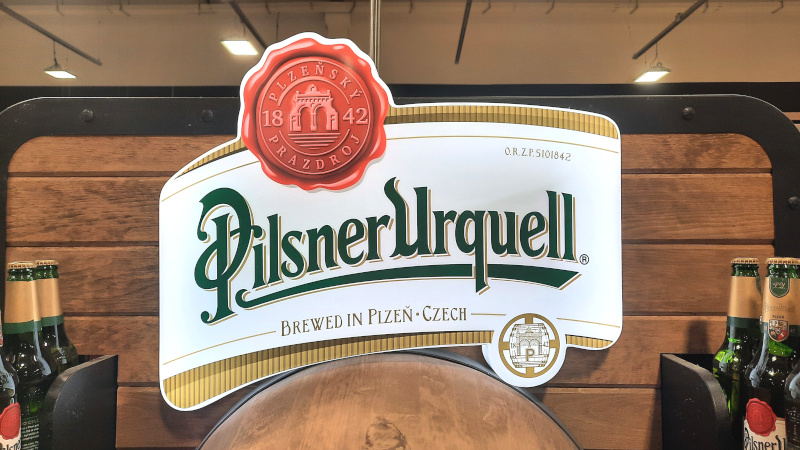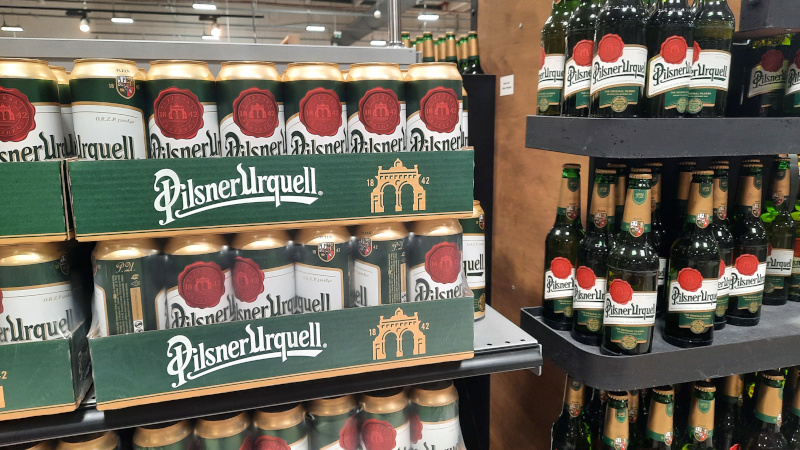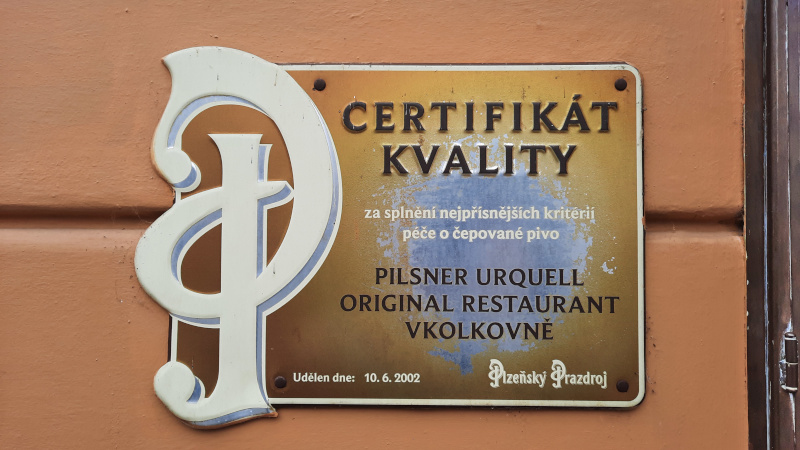Pilsner Urquell – The source of Pilsner
Pilsner Urquell is not just a beer, it’s a brand and a worldwide brand at that. Probably one of the most famous beers in the world and certainly the most well known in Czechia let’s explain some things that you may not have known and let’s see who might like to try one.

The Beginnings of Pilsner
Back in 1838 there were only some privately run breweries in the Bohemian town of Plzen serving beers which, shall we say, lacked quality. In fact the quality was so bad that the town’s pub owners and city officials decided to invest in their own municipal brewery and do things a bit differently. This required using the most up to date technologies of the day including steam power and refrigeration. It was also going to take the knowledge of a master brewer. Step forward a Bavarian man named Josef Groll.
Pilsner – the New Beer
As much as the Czechs love to claim Pilsner as their own invention it started as a very international affair. Josef Groll combined English malting techniques with Bavarian yeast. Bohemia added the soft water and the Saaz hops. In any case, the first testing batch appeared on October 5th 1842 and became publicly available on ST Martin’s Day (November 11th) as Pilsner Pale Lager. In Prague Pilsner Urquell was first served at the U Pinkasu pub in April 1843.
Pilsner or Pils

In 1859 the town trademarked “Pilsner Bier” and for almost 60 years the “Plzen Town Brewery” produced this new Pilsner Pale Lager but the brewing process was now becoming more widespread. In 1887 the brewery began to use bottles. In 1898 the Town Brewery decided to give it’s beer a new name being trademarked in Czech “Plzeňský Prazdroj” and German “Pilsner Urquell” which means the “source of Pilsner”. A decade later when a German brewery also tried to call their beer Pilsner the Bohemians complained and an agreement was struck that the Germans could use the word “Pils” instead. It was during the post-ww2 communist era that the brewery took the name Pilsner Urquell Pivovar.
Who May Drink Pilsner Urquell?
If you are a lager drinker then you’ll want to try Pilsner Urquell. In general it will be a little stronger than you are used to because whereas the standard beer in Czech is what we call “10 degrees or 4%”, a Pilsner Urquell is “12 degrees or 5%” and possibly you’ll find that it has a crisp taste followed by a slightly bitter aftertaste (this is a feature of Saaz hops). In the UK if you are inclined to drink a “bitter” then you are less likely to want to try Pilsner Urquell. Look for our dark beers instead.
Prices for Pilsner Urquell
You may find places doing a deal on the day where the price may be as low as CZK40 for a 0.5L glass but in general you’d expect to pay CZK60+ in a regular bar, more if you are ordering it in a restaurant. Tourist hotspots like the Old Town Square are charging a ridiculous CZK160.
PUOR

PUOR stands for Pilsner Urquell Original Restaurant. These belong to a brewery franchise and at the time of writing there are 17 sites in Prague with the aim of offering Pilsner Urquell lager of the highest quality combined with quality Czech cuisine in a pleasant environment evoking the atmosphere of a historic brewery. They will have the plaque above prominently displayed by the door. The Pilsner Urquell storage, temperature and serving correspond to the highest quality level where the beer is drawn from large cooled copper tanks rather than kegs. Examples of PUOR in Prague would include Kutilak, Kolkovna, U Vejvodu and Deminka.
Something Related or a Few Minutes Away
Czech Beer – Font of Eternal Youth
8 Things to Know about Prague Markets
